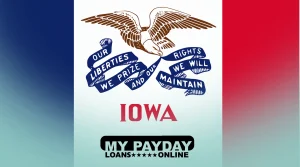$400 Dollar Loan Fast
Your Essential Guide to $400 Payday Loans: Fast Cash When You Need It Most
It has become crucial for the people to know where to seek financial help from when life keeps on throwing financial challenges in your way. We at My Payday Loans Online offer convenient and fast $400 loans to help you overcome emergency situations. Say goodbye to long approval times and complicated paperwork. We offer quick online application and fast fund transfer to ensure you receive the help you require when you need it the most.
Experience the peace of mind with us as we place special priority on simplicity, speed, and transparency. It will give you the much needed financial boost when you are stuck in an emergency.
Before we proceed, let us turn our attention towards why you must opt for a $400 loan.
Why Choose a $400 Loan?
If you are stuck in an emergency situation and need a loan without undergoing strict credit check measures, a $400 loan can prove to be of much needed assistance for you. The reasons why you must opt for the loans from us are:
Rapid Approval Process
Our efficient application system allows you to swiftly access the loan amount. We often disburse the amount on the very same day or next business hours.
No Collateral Needed
We don’t follow practices like traditional loans where you have to submit a collateral to avail a loan. Our loan is totally unsecured and you don’t have to submit any collateral. The motive behind the step is to make it accessible to as many people as possible.
Flexible Repayment Options
We offer adaptable repayment plans because we understand that the financial situation of each borrower varies. That’s why we have designed flexible repayment options. The plans are tailored to meet your specific needs.
Convenient and Accessible
You can apply for the online loan at the comfort of your home. It helps you avoid wasting your time by standing in long queues and completing loads of paperwork.
Let’s now divert our attention towards who all can gain benefits while applying for the $300 payday loans from us.
Who Can Benefit From a $400 Loan?
Our loans are the perfect option for the individuals who:
Have Unexpected Bills
If you are surrounded by the unexpected medical expenses, utility bills, and urgent home repairs, you are definitely bound to have a headache. Thanks to our loan facility, you can cover up all these bills and overcome the financial stress you are going through.
Experiencing Short Term Cash Flow Issues
There are many people present across the globe like you who rely on their monthly salaries for their survival. When an unexpected expense arises, their entire monthly budget gets disrupted as they have no emergency funds. You can avail our loan facility to bridge the financial gap you are facing until your next paycheck arrives.
Need Emergency Funding
Emergencies can strike any moment and they can have severe repercussions on the individuals. That’s when the need for having access to quick financial assistance can make a huge difference. Gaining access to the funds will help them sort out the emergency.
It is time to understand how these loans work so that you have a fair idea about it before applying for the same.
How Does the Process Work?
Availing loans from My Payday Loans Online is a pretty straightforward process. We follow a simple and hassle-free application process to ensure you can easily fill the form. You can easily understand the steps involved as we proceed further.
Submit An Online Application
The very first step involved is filling out our quick and secure online application form. You must provide your basic information like name, income and employment details, and bank account details.
Instant Loan Decision
Our team of lenders will carefully review it and you will receive an instant decision after you submit the loan application. Our professionals use advanced technology and tools to quickly and efficiently process your application.
Approval and Agreement
We will share the loan agreement with you after your application is approved. The agreement will share the loan terms, interest rate to be charged, and the repayment schedule. You must carefully review the document and give your consent after the review.
Receive The Funds
The funds will be directly deposited in your bank account after you accept the agreement. The transfer process will be initiated on the very same day or next business hours to allow you to counter the situation.
Repayment
We follow a simple repayment process. We will automatically deduct the loan amount along with the interest fees on the due date. If you are facing any financial issues, do let us know in advance so that we will communicate with you before withdrawing the sum.
It’s time to discuss the eligibility criteria for the loan.
Eligibility Criteria for The $400 Loan
The user must fulfill the following criteria before applying for the loan as we follow an inclusive process. The guidelines are:
- The borrower must be at least 18 years old.
- They must be a US citizen or a permanent resident.
- They must have a proof of employment or a steady source of income.
- Their bank account must be active and operational.
- They must share their valid contact details. (Email and contact number)
We follow a pretty straightforward eligibility criteria. It helps ensure that you can easily apply for the loan and receive a decision without any delay.
Key Benefits of Choosing My Payday Loans Online
The various compelling benefits a user can enjoy by applying for the loans from us are:
Fast and Simple Application Process
We have designed our application process in a simple manner so that the user can easily fill it within a few minutes. There is no need for you to visit the physical store or wait in the line for long hours.
Transparent Terms
We believe in maintaining transparent relations with our customers. We don’t charge any hidden fees or unexpected charges while approving the loan application.
Secure and Confidential
We have employed advanced and strict data security measures to protect your personal and financial information. It helps ensure a safe borrowing experience for all our users.
No Impact on The Credit Score
We use a soft credit enquiry that will have no impact on your credit score. Our inquiry is not at all like a traditional credit check where your credit score gets impacted.
Flexible Options
Our team will share the loan terms that perfectly align with your payday schedule. It allows you to repay the loan when it suits you the best.
What You Can Expect After Applying For The Loan?
Once you fill and submit the application, you will receive:
Confirmation Email
Our team will share the confirmation email with you which will confirm your application status and details.
Immediate Decision
You will receive an instant decision on your application, thanks to our advanced systems. Once the application is approved, you will be able to promptly review and accept the loan terms.
Quick Fund Transfer
Your loan will be processed and the funds will be directly deposited in your bank account as soon as possible. It is achieved after we receive your approval of the loan terms.
It is crucial to know where to seek reliable financial help when you are facing an emergency situation and need $400 loans. Our team at My Payday Loans Online, the best online lending platform provides an efficient and trusted way to secure the loan amount. Take the first step forward towards achieving financial peace by applying for a $400 loan today.
Connect with us today and bridge the gap until your next paycheck arrives with My Payday Loans Online- Your trusted and reliable partner in the lending world.




